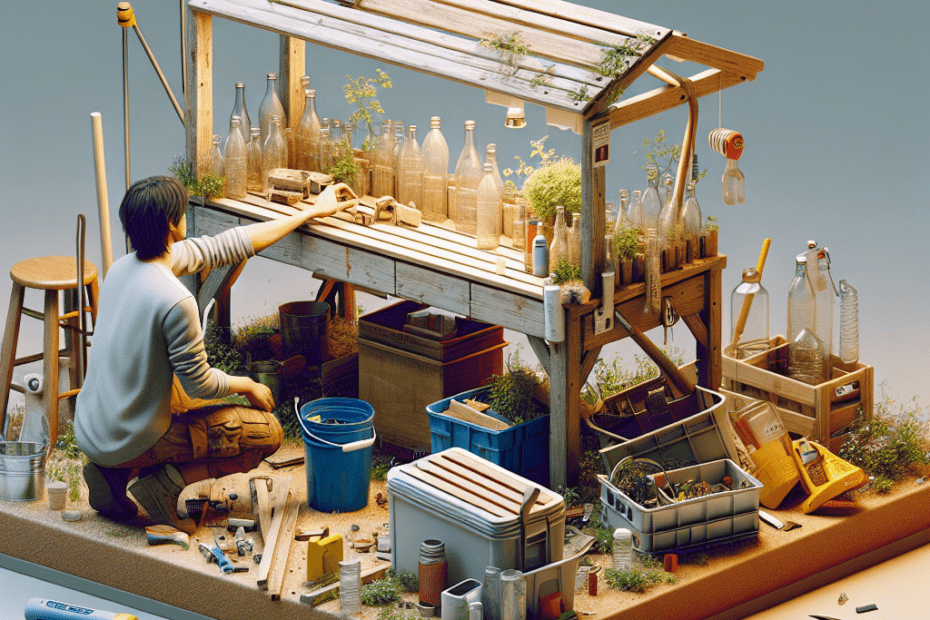“`html
Introduction
In recent years, more people are trying to create sustainable gardens, making the search for eco-friendly gardening methods grow. Among the best ways to embark on this green journey is by building a DIY potting bench from recycled materials. This not only helps reduce waste but also adds a charming rustic essence to their gardens. Readers passionate about sustainability and gardening can benefit greatly from crafting their own customized potting area.
Why Build a DIY Potting Bench?
Many find themselves in need of an organized space to work on their plants. According to a garden trends survey by the National Gardening Association, gardening participation increased by 18% between 2019 and 2020. Tools and soil bags can clutter gardens, but a potting bench serves as a dedicated area to foster their green thumb. Moreover, when built using recycled materials, it eliminates the need for purchasing new resources, thereby cutting expenses and emphasizing sustainability.
Gathering Recycled Materials
The first step to materialize a DIY potting bench is by sourcing materials that either they already own or can find through recycling avenues. Common sources include:
- Pallets: Often found behind stores or in warehouses.
- Old Cabinets: Whether they’re out-of-use kitchen cabinets or dresser drawers.
- Leftover Lumber: Extra pieces from previous projects.
- Reclaimed Doors: Ideal for sturdy bench tops.
- Metal or Wooden Crates: Can double as storage units.
Frequently, homeowners underestimate the value of unused items lying around in garages or basements. They are encouraged to take a second look, as many of these discarded items can be upcycled into valuable components for their potting bench.
Step-By-Step Potting Bench Construction
Once they have gathered their materials, it is time to start building. Here is a simple guide to constructing a DIY potting bench:
- Design a Layout: Sketch a basic design. Decide how big the bench should be, considering the space available and gardening needs.
- Build the Frame: Use pallets or leftover lumber to construct the base frame. Secure corners with nails or screws for stability.
- Attach the Benchtop: A reclaimed door or pallet can act as a strong surface for the benchtop. Ensure it is securely fixed to the frame.
- Add Shelves: Install additional shelves using old planks or cabinet pieces. This creates tiers for storing essential tools and pots.
- Incorporate Storage: Attach old crates or drawer sections below the benchtop for extra storage.
- Finish and Decorate: Sand rough edges and add a coat of protective wood stain or paint if desired.
Benefits of Using Recycled Materials
Besides reducing their carbon footprint, using recycled materials comes with several advantages.
| Benefit | Explanation |
|---|---|
| Cost-Effective | Recycling reduces the need to purchase new, costly materials. |
| Environmental Impact | Saves materials from ending up in landfills. |
| Unique Designs | Offers a creative outlet to design personalized pieces. |
These tables can also be personalized by incorporating other recycled materials, like tin cans as pots or a reclaimed window as a backdrop, adding character and function.
Key Takeaways
- Building a DIY potting bench is an eco-friendly choice that gives new life to old materials.
- Gather supplies like pallets, old cabinets, and other repurposable items to minimize cost.
- Follow simple construction steps to craft a functional, custom bench suited to their gardening needs.
- Enjoy financial savings, reduced waste, and a chance to showcase creativity through upcycled designs.
FAQ
- Q: What tools are needed to build a potting bench?
- Q: Is it possible to make a potting bench without woodworking experience?
- Q: How can they ensure the potting bench lasts longer?
- Q: Can recycled materials be easily found?
- Q: Are there safety precautions to consider while building?
A: Basic tools such as a hammer, saw, screwdriver, and tape measure are essential.
A: Yes, by starting with simple designs and using pre-existing structures like pallets or cabinets.
A: Protect it with a weatherproof sealant or outdoor paint to withstand the elements.
A: Absolutely, local recycling centers, online marketplaces, and DIY community groups are resources.
A: Always wear protective gear such as gloves and goggles, and work in a well-ventilated area.
In conclusion, the DIY potting bench is more than just a project. It represents a commitment to sustainability and creativity, transforming unused materials into functional garden furniture.
“`
